by Josh Adetunji, Projects Volunteer
On 3 and 4 August 2020, Cities for Children organised two consultations with civil society members and government titled ‘Policy Meets Practice,’ with the aim of addressing challenges faced by street children in Pakistan. The Consortium for Street Children defines street-connected children, or “street children”, as children who depend on the streets to live and/or work and who often have strong connections to public spaces as part of their day to day lives. A number of challenges faced by street-connected children in Pakistan were identified by the organizations in attendance at the event and actionable solutions were put forward as recommendations for policy makers.
Street-connected children are often neglected and left to fend for themselves; their thoughts and opinions are often unheard and ignored. How can we truly address their challenges without understanding what they are? This is counter-intuitive, but policy is often looks down and overlooks the voices of the most vulnerable in society, sometimes exacerbating the issues.
A child rights approach calls on all relevant stakeholders to incorporate the perspectives of street connected children in any policy-making process that can impact their lives. The recommendation was for policy makers to review relevant legislation surrounding street children and examine them through a child rights lens as offered by the UN General comment No.21 on Children in Street Situations.
Many street-connected children belong to refugee, displaced or mobile communities who often do not have the requisite identity documentation to access services like public education, healthcare, bank services etc. Obtaining this documentation retrospectively is a difficult process. A lack of identification documents can be a great hindrance to street children’s participation in mainstream education and economic activities.
Partners like SPARC and Pehli Kiran Schools shared their experiences on the issue. Without, for instance, birth certificates, children are prevented from accessing education and this eventually contributes to high dropout. There is a need to streamline and simplify the process of obtaining identity documents, a measure which would allow more children to attend school.
Every child has a right to an education. However, in order to sustain themselves and their families, children may have to look to create income from the streets. Street-connected children may no longer see the benefits of attending school for their children once they begin supporting their family financially. Policymakers must partner with civil society organizations to engage with parents directly, understanding their needs and wants, while also incentivising education. Such grassroots activities can allow families not only to understand the long-term benefits of education but also the short-term gains. Working directly with the people most affected allows us to truly understand their circumstances so that all the relevant stakeholders can work towards systemic changes.
Street-connected children are especially vulnerable to physical, psychological and sexual violence. Every child has the right to be safe from cruelty and harm. Therefore, policymakers should look to strengthen the child protection system. Furthermore, authorities must make sure legislation and processes embody a do-no-harm ethos, installing protocols for duty bearers such as the police who handle vulnerable children to hold them accountable for their actions.
A continuum of care would mean following up with families after reunification processes, so that children do not end up back on the streets. The creation of drop-in spaces for children to learn and to play in safety is an important step to creating alternatives to the street.
Poverty affects people in many different ways. The conditions that street-connected children grow up in can potentially force them into potentially dangerous situations such as taking on labour that threatens their safety and wellbeing. It can also leave them vulnerable to violence and trafficking.
We call on policymakers to work with families to create alternatives to sending children into hazardous labour, or to work on the streets. This could include access to social protection and welfare programmes like Ehsaas being extended to communities in urban poverty; or creating sustainable solutions such as access to micro-finance for enterprise and livelihoods. Creating stronger financial foundations for families and providing opportunities for children to continue education could allow them to finally break the cycle of intergenerational poverty.





